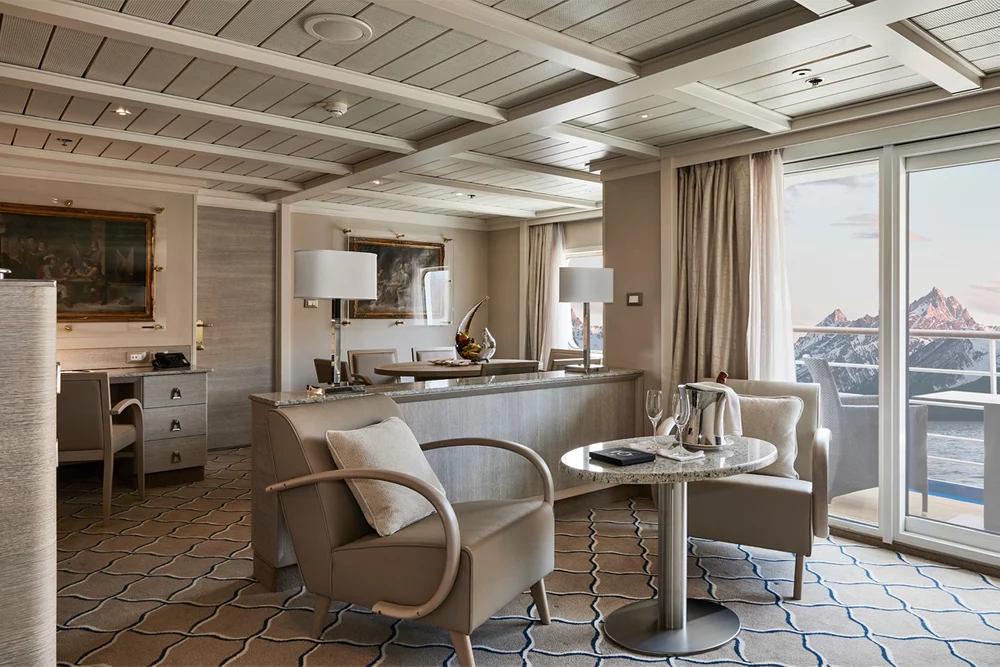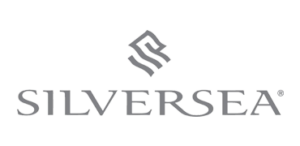Polynesia & Melanesia / Micronesia
- 6 May ‘25
- 14 nights
- Departing from Lautoka
- Silver Cloud
-
Inside price fromCall for price
-
Outside price fromCall for price
-
Balcony price fromCall for price
-
Suite price fromCall for price
YOUR ITINERARY
Lautoka - Rotuma, Fiji - Funafuti, Tuvalu - Nukufetau, Tuvalu - Mata-Utu, Wallis Island, Wallis and Futuna Islands - Asau, Samoa - Apia - Niuatoputapu - Neiafu, Vava'u Group - Levuka, Ovalau, Fiji - Leleuvia, Fiji - Lautoka
Lautoka is often described as the sugar city. Sug...
Lautoka is often described as the sugar city. Sugar cane is the major industry of Fiji and Lautoka is its main base. Here are the industries’ headquarters, the largest sugar mill, modern loading facilities and a large wharf. It features 70 miles of roads, almost all paved, a wonderful botanical garden and royal palm trees decorating the city’s main street, Vitogo Parade. The municipal market is another attraction from both outside and inside.
Fiji typifies the image of paradise. The people here live as they have done for centuries, retaining their ancient traditions and simple and carefree lifestyle supported by the harvest of a generous land and bountiful sea.
Funafuti is an atoll and the capital of the island nation of...
Funafuti is an atoll and the capital of the island nation of Tuvalu. It has a population of 6,320 people, making it the country’s most populous atoll, with 60.15 percent of Tuvalu’s population. It consists of a narrow sweep of land between 20 and 400 metres wide, encircling a large lagoon 18 km long and 14 km wide.
“”
...“”
“”
...“”
As the first independent state of Polynesia, Samoa is co...
As the first independent state of Polynesia, Samoa is considered the cradle of the nation, a place where the Earth and the heart fuse seamlessly fuse together. Incidentally, were one to translate the word “Samoa” into the traditional Polynesia dialect, they would find that the words “Sa” and “Moa” mean exactly that: earth and centre. Apia, Samoa’s only town, is found central north coast of Upolu, Samoa’s second largest island. Originally a tiny village of just over 300 inhabitants (c. View less
1800), the town’s population has grown to be just shy of 40,000. While a population of such size might mean forgetting traditional roots in favour of modern life, this has not been the case (too much) in Apria. The Samoan way of life is still very much the order of the day; traditional open-sided houses with thatched roofs on platforms of coral or concrete, also known as ‘fales’, can be seen everywhere and nearly all of the population (including the policemen) wear the typical local dress; skirts, or ‘lavalavas’ for men, and long, mumu-style dresses for women. The markets are bursting with culture and colour, selling everything from handicrafts to cuisine and local produce. If the idyllic setting of aquamarine pools of bluey green water, framed by low fringed palms and huge umbrella trees seems familiar, that’s because it probably is. The island, and notably the southern resort of Lefaga, was used in the 1953 Gary Cooper classic Return to Paradise Beach. It is also the last place on Earth to see each day’s sunset.
Also referred to as Keppel Island, Niuatoputapu (meaning R...
Also referred to as Keppel Island, Niuatoputapu (meaning “Very Sacred Coconut” in the local language) is one of the northernmost islands of Tonga, located in the southwestern Pacific Ocean. The highest point of the island is a hill just 515 feet (157 meters) in height, the eroded remnant of a large volcano that erupted approximately 3 million years ago. The island consists of three primary villages with a total population of just over 900 inhabitants. The original Niuatoputapu language has been extinct for centuries; residents now speak Tongan.
With a population of 6,000, Neiafu is the capital of the...
With a population of 6,000, Neiafu is the capital of the Vava’u Group and the second largest municipality in the Polynesian nation of Tonga (a 169-island archipelago in the South Pacific). The city is situated next to a deep- water harbor (Port of Refuge) on the south coast of Vava’u, the main island of the Vava’u archipelago in northern Tonga. The waters of this region are known for their clarity and beauty, and the area attracts many humpback whales between June and November. View less
A popular destination in Neiafu is the ‘Ene’io Botanical Garden, a bird sanctuary that promotes the survival of exotic and native bird species as well as supports and conserves a diverse array of plant life.
Levuka highlights both the historical and natural aspects...
Levuka highlights both the historical and natural aspects of Fiji. The small island of Ovalau is located off the east coast of Viti Levu. The quaint town of Levuka has the honour of having been Fiji’s very first capital where King Cakobau reigned and where the deed of cession to Queen Victoria was signed in 1874. Many of the old buildings in the town have remained nearly unchanged since the late 1800s. View less
Here one can find Fiji’s first government school, the popular Ovalau Club, and the “Cession Stone” commemorating the signing of the Deed of Cession. Just outside the city, it is possible to hike through pristine rainforest and take in the magnificent natural beauty of the surrounding area.
Lautoka is often described as the sugar city. Sugar cane i...
Lautoka is often described as the sugar city. Sugar cane is the major industry of Fiji and Lautoka is its main base. Here are the industries’ headquarters, the largest sugar mill, modern loading facilities and a large wharf. It features 70 miles of roads, almost all paved, a wonderful botanical garden and royal palm trees decorating the city’s main street, Vitogo Parade. The municipal market is another attraction from both outside and inside.
Fiji typifies the image of paradise. The people here live as they have done for centuries, retaining their ancient traditions and simple and carefree lifestyle supported by the harvest of a generous land and bountiful sea.
YOUR SHIP - The Silver Cloud
After extensive refurbishment, Silver Cloud is the most spacious and comfortable ice class vessel in expedition cruising. Her large suites, her destination itineraries and her unparalleled service make her truly special. Her four dining options will tantalise your taste buds and as 80% of her suites include a veranda, watching a breaching whale or a few cavorting penguins has never been so personal. A limited number of guests in polar waters, mean that Silver Cloud has the highest space to guest and crew to guest ratios in expedition cruising. With her 18 zodiacs, 10 kayaks, possibilities are almost limitless with ship-wide simultaneous explorations.
Description
After extensive refurbishment, Silver Cloud is the most spacious and comfortable ice class vessel in expedition cruising. Her large suites, her destination itineraries and her unparalleled service make her truly special. Her four dining options will tantalise your taste buds and as 80% of her suites include a veranda, watching a breaching whale or a few cavorting penguins has never been so personal. A limited number of guests in polar waters, mean that Silver Cloud has the highest space to guest and crew to guest ratios in expedition cruising. With her 18 zodiacs, 10 kayaks, possibilities are almost limitless with ship-wide simultaneous explorations.
STATEROOMS


